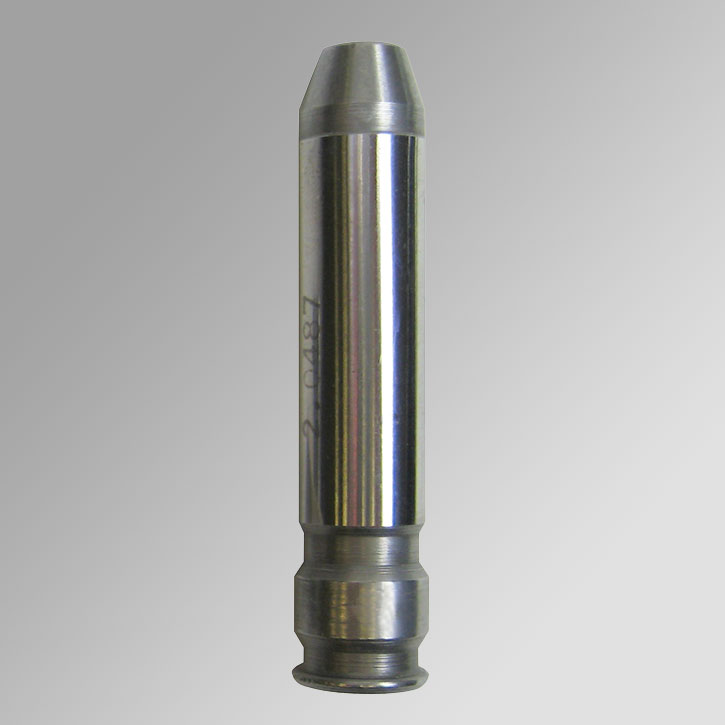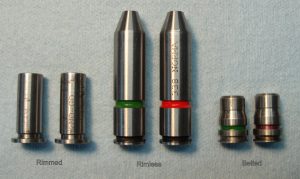Understanding Headspace: Unlocking the Secrets for Safe and Accurate Shooting

By Brady Kirkpatirick
Introduction
If you’re in the world of firearms, you’ve likely heard the term ‘headspace.’ But what is it, and why is it so vital?
My name is Brady Kirkpatrick, the founder of GunMade.com, and I’ve spent years delving into the intricacies of firearms, including the concept of headspace. In the simplest terms, headspace is the distance Between the back of the headspace gauge or the head of a case when fully seated in the chamber and the locked breech face.
Think of it as the room your cartridge has to ‘breathe’ inside the chamber. Too much or too little could lead to severe firearm malfunctions or even an accident.
The Goldilocks principle applies here; it needs to be just right!
Why Headspace Matters
Understanding the importance of headspace boils down to two key factors: safety and accuracy. Incorrect headspace can lead to dangerous situations, like a cartridge explosion (extremely rare).
It can also affect your accuracy. If the cartridge isn’t seated properly, it can throw off your shot. You don’t want to be that guy at the range, do you?
Understanding Headspace Gauges: The Good, the Not-So-Good, and the Field-Worthy
Let’s get down to brass tacks and talk about headspace gauges, the unsung heroes of firearm safety and precision. There are three main types of headspace gauges you should know about: Go, No-Go, and Field.
Go Gauge: Minimum Chamber Dimensions
First up, we have the Go Gauge.
Its name suggests its function – if your rifle’s chamber passes the “Go” test, it’s all systems go. This gauge matches the minimum chamber dimensions allowable under Sporting Arms and Ammunition Manufacturers’ Institute (SAAMI) specifications for commercial cartridges.
So, how do you use it? It’s simpler than reloading a double-barreled shotgun. Just strip your rifle down, remove the extractor and ejector, and insert the Go Gauge into the chamber. Close the bolt. If it closes without resistance, congratulations, your rifle can chamber SAAMI maximum ammunition without a hitch.
No-Go Gauge: Maximum Chamber Dimensions
Next on our list is the No-Go Gauge. This big brother of the Go Gauge matches the maximum chamber dimensions recommended under SAAMI specifications.
Using it is a cinch. You follow the same steps as with the Go Gauge, but this time if the bolt closes, it’s bad news. A closed bolt means your rifle has excessive headspace, which can affect accuracy and the life of your firearm. If the bolt will not close on the No-Go gauge, that’s good news!
Field Gauge: Maximum Safe Service Dimensions
Last but not least, we have the Field Gauge. This is the gauge that sees the most action. It matches the maximum chamber dimensions for safe service use.
To use the Field Gauge, repeat the same process as with the Go and No-Go Gauges. If the bolt closes on the Field Gauge, it’s time to call in the cavalry. Your rifle has very excessive headspace and needs immediate attention from a gunsmith.
Weighing the Pros and Cons

The cheapest insurance you will ever buy.
Each type of gauge has its strengths and weaknesses. The Go Gauge is an excellent tool for checking if your rifle can chamber SAAMI maximum ammunition. However, it doesn’t give you the full picture of your rifle’s headspace.
The No-Go Gauge, on the other hand, checks for excessive headspace, which is crucial for accuracy and longevity of the firearm. Correctly headspaced guns will close on a Go but not on a No-Go gauge. If the gun closes on a No-Go it can be safe to fire, but is well on its way to needing attention from a gunsmith.
The Field Gauge is the most lenient of the three. It only flags rifles with dangerously excessive headspace. While this is a critical safety measure, it doesn’t provide the detailed information you might get from the Go or No-Go Gauges.
Understanding the Art of Headspace Gauge Interchangeability
Have you ever wondered if your .308 Winchester headspace gauge could also work with your 7.62x51mm NATO? Well, let’s delve into the intriguing world of headspace gauge interchangeability, SAAMI calibers, and the pros and cons of using interchangeable gauges.
The Magic of Interchangeable Gauges
First things first, let’s get down to the nitty-gritty: can some SAAMI calibers use the same headspace gauge as another caliber? The answer is a resounding “Yes!” Essentially, this is all about the shared dimensions between different calibers, particularly the case head, body dimensions and shoulder angle.
For instance, .308 Winchester and 7.62x51mm NATO, despite being different calibers, have identical case body dimensions. This means that the headspace gauges for these two calibers are interchangeable.
Cool, right?
Your Quick Guide to Interchangeable Gauges
Now, to make your life easier, we’ve put together a list of some of the most common interchangeable gauges and their corresponding calibers. So, the next time you can’t find your specific gauge, you’ll know which one to substitute! Here are just a few…
– .308 Winchester: 7.62x51mm NATO
– .223 Remington: 5.56x45mm NATO
– .270 Winchester: .30-06 Springfield: 25-06: 6.5-06: 35 Whelen
– 30-40 Krag: 303 British: 35 Winchester
The Ups and Downs of Gauge Interchangeability
Now, you might be thinking, “Great, I can save some cash and storage space with this gauge interchangeability thing!” And you’re not wrong. Using interchangeable gauges does provide some benefits, such as cost savings, convenience, and versatility.
There are many cartridges that do not share interchangeability. So, this convenience is not universal.
Why Wildcats and Custom Calibers Need Special Headspace Gauges
Wildcat and custom calibers, my friends, are the rebels of the ammunition world – unique, custom-made, and not conforming to standardized specifications. They’re like the motorcycle-riding bad boys of the gun world, and they need special attention. That’s where headspace gauges come in. But why?
Headspace gauges measure the distance from the part of the chamber that stops forward motion of the cartridge (the datum reference) to the face of the bolt.
Incorrect headspace may lead to myriad problems, like misfires, case head separation, or even dangerous situations. With wildcats and custom calibers, the standard gauges just won’t cut it because of their unique measurements.
Pacific Tool and Gauge: A Wildcat’s Best Friend
Pacific Tool and Gauge offer a range of headspace gauges designed specifically for wildcats and custom calibers. Let’s break down some of their offerings:
- Hornet-Based Wildcats: These gauges are made specifically for wildcat cartridges based on the .22 Hornet. They provide an accurate measurement of headspace, ensuring your wildcat ammo is as safe as it is unique.
- 284 Winchester-Based Wildcats: For those who like to play around with the .284 Winchester, these gauges are a godsend, helping you keep your headspace in check.
- 30-30 Winchester-Based Wildcats: If you’re into the classic 30-30 Winchester round and like to customize it, these gauges are your go-to tool for measuring headspace accurately.
- Belted .535″ Based Wildcats: This gauge is designed for belted magnum cartridges with a base diameter of .535″. It’s a niche market, but if you’re in it, this tool is invaluable.
- Extension Headspace Gauges for ARs: Own an AR? Check. Like to customize your ammo? Check. Need to measure headspace? Double-check. These gauges got you covered.
- Incremental Headspace Gauges: These are a bit of a specialty item. They allow for precise, incremental measurement of headspace, perfect for those who like to tinker and tweak their wildcat or custom ammo to perfection.
Using Headspace Gauges for Wildcats and Custom Calibers
Using these gauges is pretty straightforward: you’re essentially measuring the distance between the bolt face and the point in the chamber that stops the forward motion of the cartridge.
Assuming the bolt closes on the Go gauge with the slightest of feel, indicating “zero” headspace. Zero indicates there is no measurable space between the closed bolt face and the back of the gauge.
Conclusion
Well, folks, we’ve reached the end of our deep dive into the fascinating world of headspace gauges. I hope you’ve found this journey as enlightening as I have.
Remember, understanding headspace gauges and how to use them correctly is an important part of being a responsible gun owner. This knowledge not only ensures safe shooting but also significantly improves your accuracy. If you do not fully understand headspace, that’s OK. Take your gun to a qualified gunsmith, they can check it for you.
In the course of our discussion, we’ve unpacked the ins and outs of headspace gauges. We’ve explored their importance, how they work, and how to use them properly. We’ve also discussed the potential dangers of neglecting headspace checks, including the risk of misfiring and the potential damage to your firearm.
But don’t take my word for it. Statistics show that firearms with improper headspace are more likely to experience malfunctions,
Headspacing is a topic that can seem daunting at first, especially for new gun owners. However, with the right resources and a bit of practice, it becomes a routine part of maintaining your firearm. It’s a skill that promotes safety, enhances shooting accuracy, and increases the lifespan of your firearm.
To all the 2nd amendment supporters, hobbyists, self-defense enthusiasts, and hunters out there – keep learning, keep practicing, and above all, stay safe. Remember, the key to confident gun ownership is knowledge, and you’re already on the right track by being here.
Until next time, happy shooting!
Books that might help…







